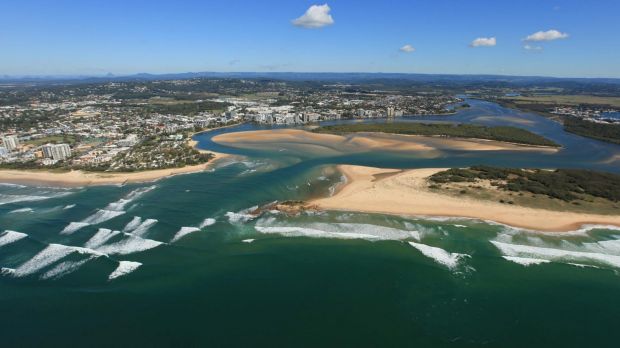Million-dollar steps are about to be taken to stop beach erosion at one of the Sunshine Coast's most popular camping grounds.
However, the plans have divided community reaction.

The Sunshine Coast weighed four options - ranging in cost from $4.7 million and $9.2 million - to find a solution to beach erosion at Maroochydore and Cotton Tree.
The decision was taken to replace the existing geobag groyne wall with a new groyne made from rocks instead of geo-fabric bags because it would save the council $2.4 million over the life of the wall.

That will cost $4.5 million to complete.
The other options were:
- building a 200 metre rock groyne to replace the 70m southern groyne for $4.837 million; or
- building a northern river entrance by dredging a northern channel and filling the southern mouth of the river and building a new beach for $7.560 million; or
- building a new northern river mouth by dredging a new northern channel, filling the southern river mouth for $9.156 million.
Before building the new groyne, the council will spend time completing more detailed studies into the impact of sand movements, ocean movements and currents on Maroochydore Beach and Cotton Tree camping grounds.
A new report will be finished by June.
It will keep the plan to pump sand from the lower Maroochy River to the Maroochydore Beach, which has been under way for almost two years at cost of $500,000.
Maroochydore Beach is one of 11 high-priority beach erosion issues on the Sunshine Coast.
Sunshine Coast mayor Mark Jamieson said community consultation on the issue had been poor and a new round would be ordered.
"Certainly this could have been done better," Cr Jamieson told Seven News.
"The Cotton Tree precinct is a major tourist hub and our community makes great use of this groyne," he said.
"While overall and ongoing cost is an extremely important consideration, council also needs to take into account the impacts all available options have on our economy, our tourism, our community, our environment and our cultural heritage.
"Once we have that analysis, our community will be better informed when we undertake community consultation before council makes any decision."
Maroochydore councillor Jason O'Pray said he was "absolutely convinced that locals do not want to see rock walls at the Maroochy River mouth".
At its first meeting of the 2017 year on Wednesday the Sunshine Coast Council approved the shift from "geo-fabric" to natural rock as well as changing its flying fox control policy.
Deputy mayor Tim Dwyer said if residents decided to keep the geo-fabric bags they should pay for the extra costs to council in their rates.
The Sunshine Coast has developed a shoreline management plan which divides its beaches into four zones from north-to-south and identifies key "trigger projects" to protect against beach erosion.
The Maroochydore River beach nourishment plan is one of the Sunshine Coast's key beach erosion issues.

0 comments
New User? Sign up